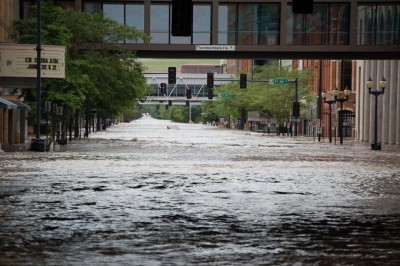Here is a collection of tips to boost awareness to help people survive flooding. Floods are one of the most common disasters that do happen in the United States and even the rest of the world. Some of them develop slowly over time and some happen in just a few minutes. Floods can show up without a sign and even though there was no rain in the area for months. They are powerful enough to shift the terrain and destroy property. You will not be unjustified to fear them and smart to take precautions and prepare.
Flash floods can occur within a few minutes or hours of excessive rainfall, a dam or levee failure, or a sudden release of water held by an ice jam. Flooding can happen during all four seasons of the year – Winter, Spring, Summer and Fall. They often have a wall of roaring water carrying debris. Overland floods, the most common type event occurs when waterways like rivers or streams overflow their banks and cause a flooding in the surrounding areas. Be aware of flood hazards no matter where you live or work.
Before a flood:
Even if it looks like you live in a community with a low risk of flooding remember that with just rain, a flood can occur. Having no issues with flooding in the past does not mean that you will never happen to come across one. Flood hazard maps have been created in order to show the flood risks for your community, it includes the type of flood insurance coverage you will need as well, because standard home insurance does not cover flooding.
* Build an emergency kit and make a family communications plan.
* Make sure to elevate the furnace, water heater, and electric panel in your home if you live in.
* Installing check valves that prevent flood water from backing up in the drains of your home.
* Construct barriers to stop flood water from entering the building and seal off walls in the basement with waterproof compounds.
List of causes of flooding: Tropical Storms and Hurricanes, Spring Thaw, Heavy Rains, West Coast Threats, Levees and Dams, Flash Floods.
Driving during floods:
Just six inches of water will reach your vehicle and cause loss of control and possible stalling. A foot of water is enough to float most vehicles, two feet can carry away most vehicles. Do not try to drive through a flooded road, the depth of the water is never obvious.


